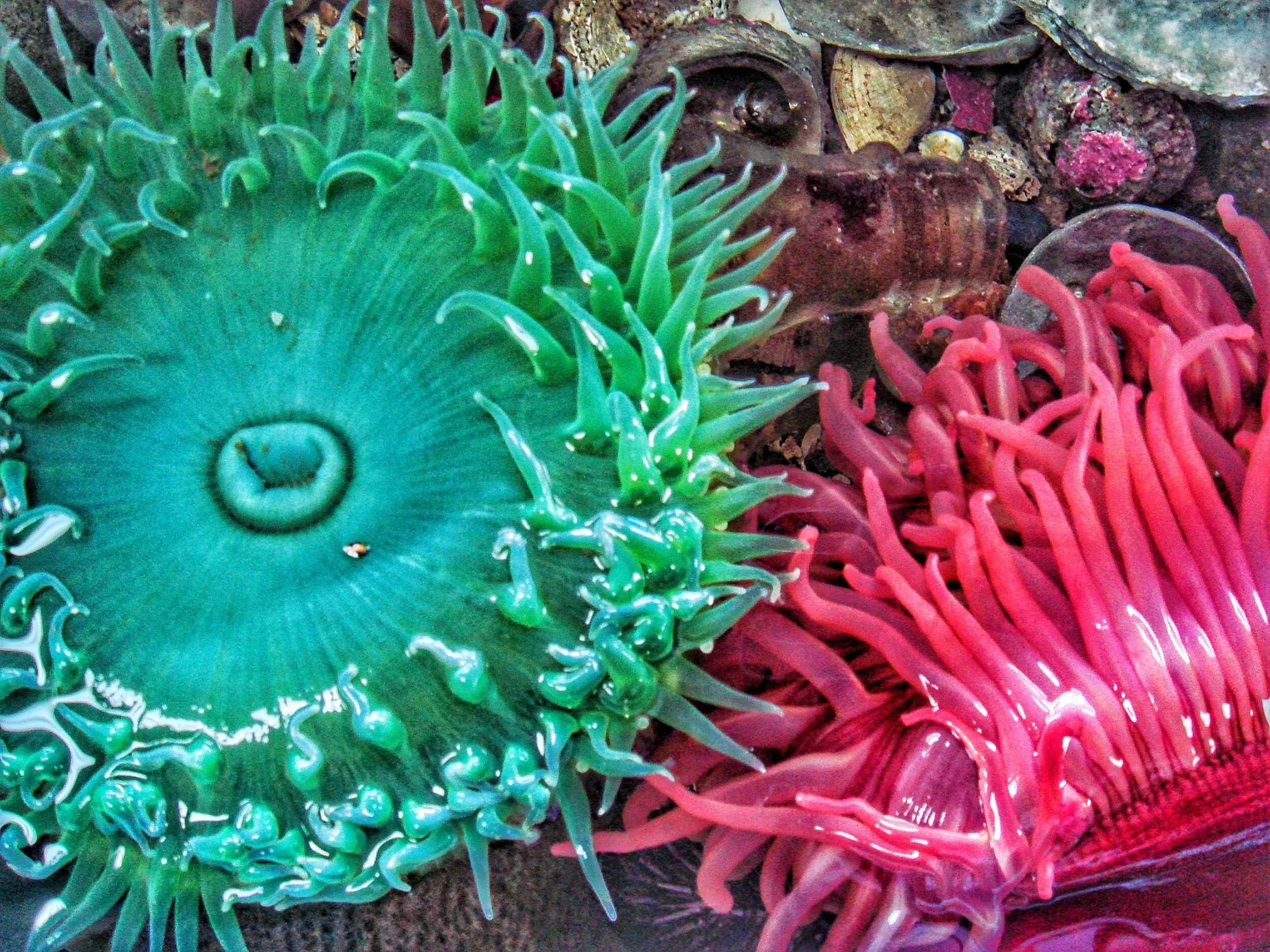A couple of different species of sea anemone in a rock pool in Bamfield, British Columbia, Canada. The image has been enhanced to show some of the details of the anemone's body. Credit Samantha Andrews/Ocean Oculus
Found in every colour of the rainbow, and from just a few centimetres to nearly 2 meters in diameter, sea anemones are utterly enchanting. They are named after the anemone flowers which are found on land and also sport a fabulous range of colours. Unlike the terrestrial flower, sea anemones aren’t plants. Although they may not look it, they actually animals.
Sea anemones are related to jellyfish, hydra, and corals. Like corals, some species live in what we call a mutualistic relationship with single-celled algae which live inside the anemone. When the algae photosynthesise, it produces oxygen and food in the form of sugars. Because the algae are inside the anemone, the anemone gets to use the oxygen and food directly. A win for the anemone! The algae benefit from having a safe place to live – protected from the hungry mouths of herbivores.
Although they don’t move around, most sea anemone species are veracious predators. The numerous tentacles that you see around the disc contain neurotoxins. Lying in wait, the anemone only needs a hapless critter to swim into the reach of the tentacles and BAM! The prey is paralysed. The tentacles then pull the doomed prey into the anemone’s mouth – that’s the hole you can see in the centre of the green anemone in the photo. Don’t let the size of the hole fool you into thinking that they can only eat very small animals. The mouth can stretch to accommodate small fish, crabs, and molluscs.
There are over 1,000 known species of sea anemones. Although some live in deep waters, many live in shallow waters attached to rocks, seaweeds, or even sometimes buried in sand or mud. Next time you are down the beach and you see some rocks, go take a look – you might just find some of these beauties tucked away.
